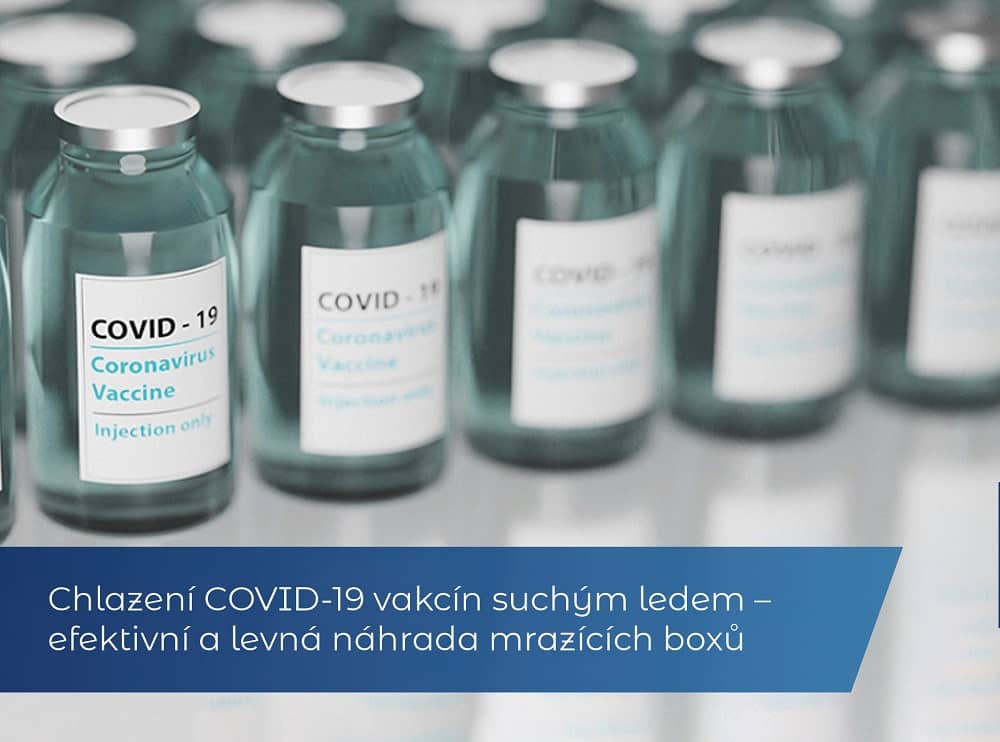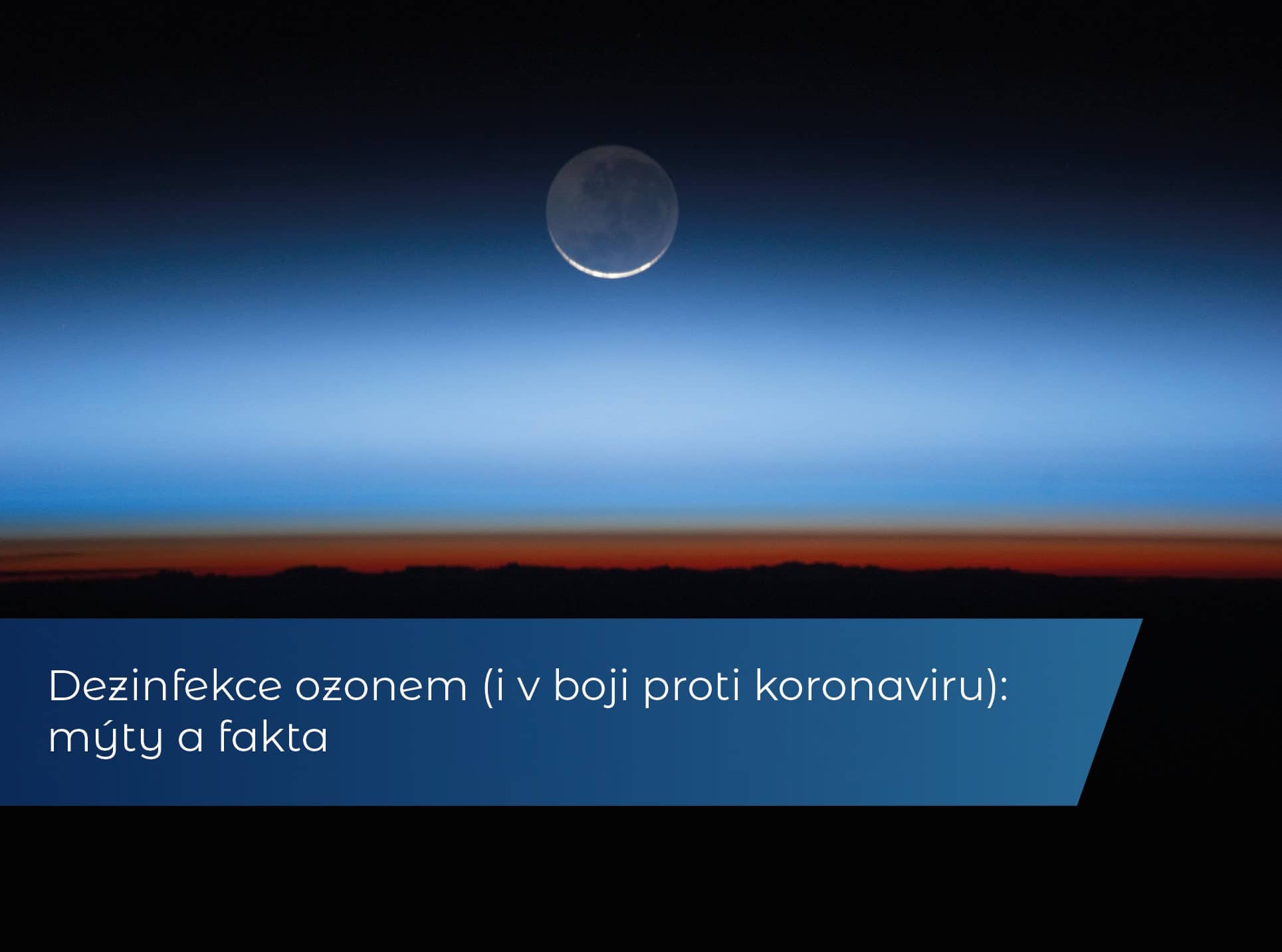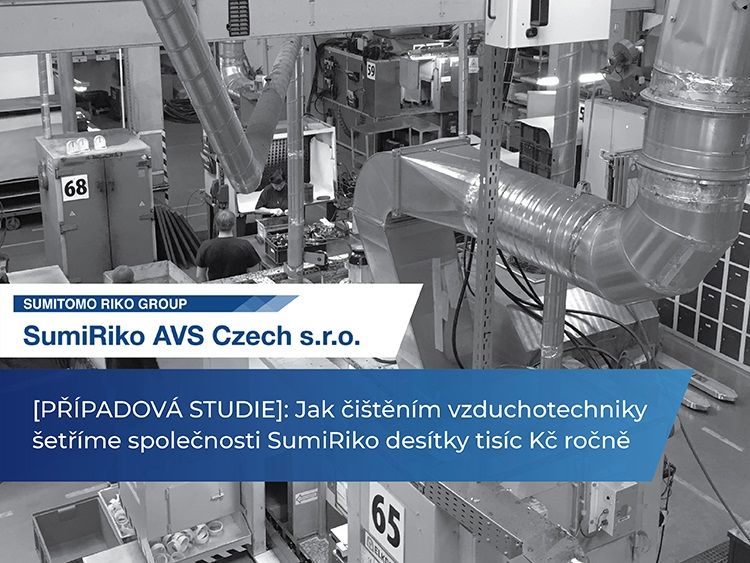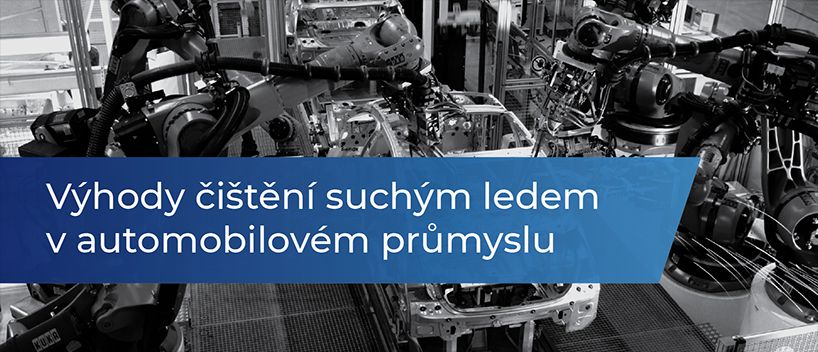









SumiRiko is southern Moravia based company that manufactures anti-vibration car parts. By cleaning their ventilation system using dry ice blasting, we have helped them lower the amount of scrap products. We have also improved the quality of the workplace and saved the company more than 50 000 CZK in 6 months. How did we do it?
You might know the SumiRiko as Anvis AVT – the company operated under that name until March 2017. The company employs around 450 people and since 1995 it has been producing anti-vibration systems for the automotive industry in Czechia (under the auspices of the Sumitomo Riko Group).
SumiRiko’s main focus is the production of parts, fitted onto the front and rear axles of cars, which dampen vibrations and noise of the chassis while being driven. SumiRiko’s customers include Volkswagen, Audi, Škoda, Seat, Mercedes-Benz, Porsche and BMW.

The Czech branch of SumiRiko is situated in Drnovice close to the picturesque Drahan Hills. Source: sumiriko.cz
The first phase of the manufacturing of anti-vibration systems is spray varnishing. An adherent coating is applied onto the plastic and metal components by a cylinder in the varnishing unit or by a spray gun. The coated parts are then inserted into a mold and they are covered by injected molten rubber, which sticks to the components well thanks to the layer of the adherent coating. After vulcanization the components are extracted, assembled and dispatched to the customer.
But how does all this relate to the cleaning of ventilation systems?
Our client uses spraying to apply the varnish evenly. However, there is a downside to this method. It creates a large amount of waste; roughly 50% of the varnish solution gets in the air in the form of aerosol and vapour.
The acetone and oil based varnish is highly flammable and it also irritates the respiratory system. SumiRiko achieves workplace safety by using the ventilation system, which sucks up the varnish waste particles into the prepared containers. The remnants of the varnish are then disposed of by incineration.

Each varnishing unit has its own air duct (the upper part of the machine). Source: sumiriko.cz
“In October 2018 we registered a sudden decrease of performance of the ventilation system in our varnish factory. The preliminary inquiry showed that the problem was clogging of air ducts. Since our factory utilizes a highly flammable adhesive, we had to deal with the situation swiftly, due to the risk of fire. We contacted the company Eco-stations based on a positive recommendation.“
Jakub Hradil, maintenance manager
We visited the factory in Drnovice in the early November 2018. The company needed for the malfunctioning air ducts to be operational as quickly as possible – each hour of non-operation meant a loss of several thousands of CZK for SumiRiko.
The cleaning of air ducts starts with the inspection of the site, checking of the ventilation system and drafting an inspection protocol. We usually inspect the ducts visually through inspection openings that we make using a grinder.
However, this procedure was not possible in SumiRiko. Due to the high concentration of flammable gases, the factory is a zone with a high risk of explosion. Any source of spark or heat is therefore prohibited.
That is the reason why you will not find any conventional electrical equipment in a varnish factory. Instead there are machines with intrinsically safe circuits (i.e. EX equipment) and several operations are carried out manually, or using pneumatic devices, by the workers.
We had to comply with these strict conditions as well. After cutting an inspection opening with pneumatic scissors, we discovered thick deposits of dirt in the air ducts. In a pipeline with 1 m in diameter there was a 50 cm layer of impurities at the most exposed places. Over the years the microscopic particles had got attached to the metal and they had created a thick flammable crust with loose surface. The impurities impeded the efficient suction and they worsened the working conditions.

The state of the ventilation before cleaning. The impurities are a result of depositing of varnish particles. Source: Eco-stations archive
We carried out function tests on the spot to find out, whether blasting of dry ice solves the client’s problem. They take less than an hour and they do not require a factory shutdown.
We sucked out the loose impurities from the testing area of the duct by an industrial vacuum cleaner Nilfisk 3907/18 with an intrinsically safe electrical engine. To maximise our safety precautions, we placed the device outside of the production line and we linked it to the duct using a tube grounded by copper wiring.
We removed the impurities from inside the stainless steel ducts using our ECO-ROBOT. The robot is grounded and it utilizes the IC-310 dry ice blasting machine. This machine uses pellets of dry ice (solid carbon dioxide) for cleaning of the duct’s surface under the pressure of 16 bar. The dry ice disrupts the structure of the impurities and it dislocates them when it changes its volume through sublimation. And then the removed particles can be vacuumed out easily.
The result of the inspection of the ventilation system is the inspection protocol, which shows the following:
The actual cleaning of the ventilation system is performed from a platform and from the ground. We do not disassemble the ducts – the production can continue with minor restrictions. A temporary shutdown of the part of the duct, which is being cleaned, for a few hours suffices.
In SumiRiko we proceeded one varnishing unit at a time. After turning the machine off and disconnecting the inflow tube, we vacuumed out the loose impurities and cleaned out the entry point of the duct using a brush system with antistatic protection.
The more remote parts of the duct were cleaned by our ECO-ROBOT. Machine can be used in ventilation systems with round or square profile of 40+ cm in diameter; the operator links the robot to the blasting mechanism and controls its movements remotely using the control panel.

Operation of the blasting robot. Source: jettyrobot.com
We cleaned the ventilation system in the varnishing factory of the company SumiRiko in 5 days. After the duct cleaning, the concentration of the varnish in the air at the factory decreased and the amount of scrap products dropped as well.
“The solution by Eco-stations allowed us to continue the production and varnishing even during the cleaning of the ventilation system. If it had been necessary to disassemble the whole system, we would have been forced to outsource the production to our sub supplier, which would have meant extra work and less profit for us. Thanks to the cleaning with dry ice and following the time schedule, Eco-stations kept the restrictions to our operation to the minimum.“
Jakub Hradil, maintenance manager

The condition of the ventilation after cleaning. Source: Eco-stations archive
We have been working with SumiRiko ever since. We have set up regular check-ups with the frequency of once per trimester and we have already repeated the maintenance of the ventilation system twice. We are planning to expand the dry ice cleaning to the operation of the production of rubber segments and components.
“We have been working with Eco-stations for months now and we are satisfied with their services. They keep the agreed deadlines, their work is fast and brings real results. Moreover, the maintenance is performed during operation, so we do not have to worry about outsourcing our production.“
Jakub Hradil, maintenance manager
Martin je certifikovaná osoba organizace EVHA. Jeho starostí je obchod, strategický rozvoj společnosti – a také odborné konzultace. Postará se o inspekci vašich strojů a ventilace a prozradí vám, jak nečistoty a usazeniny odstranit.
Sídlo společnosti
Eco-stations s.r.o.
Na Florenci 1332/23,
110 00 Praha 1 – Nové Město
IČO: 28984650
DIČ: CZ28984650